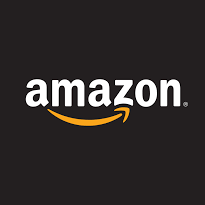How DTCs can Make the Most of Amazon: Q&A with Wellpath
by Hugh Williams on 30th Jul 2019 in News


Many brands have a complex relationship with Amazon. Yes, the reach is great, but the amount of data you get on who is buying your products is negligible. This is even trickier for DTCs, who are relying on customer insights as their USP. Here, DTC Daily talks to Colin Darretta (pictured below), CEO, Wellpath, a DTC business that recently launched a product on Amazon during Prime Day, to talk through how DTCs and Amazon can work together.
Amazon has had a tricky time persuading DTCs to sell through their platform - why did you decide the time was right to start this relationship?
Over 50% of online commerce happens on Amazon – not having a strategy for the platform effectively means that you’re actively cutting off a huge portion of potential customers. This is especially relevant for businesses selling products at price points below several hundred dollars where consumers really do value a convenient purchasing process, and Amazon is the place that offers that ultimate convenience. For large and infrequent purchases – like a mattress or new furniture – I believe DTC experiences where consumers want to really go deep on researching the nuances and specifics of the product still have a leg up for now. For most of CPG, on the other hand, Amazon is going to continue to take a big share of the market. We feel that Amazon is, more than ever, a place where you can build a brand that does really stand out. Directionally, Amazon is only building more features that facilitate building brand equity. As we watch what’s happening in DTC, more brands – and especially those with products priced below USD$100 (£80) – are coming around to the understanding that they need to figure out Amazon.
How did Amazon support WellPath on Prime Day?
The most significant piece was simply that our contacts at Amazon advocated on our behalf for our inclusion in the Prime Day exclusives launch program. Those contacts also provided us feedback and guidance on our sales strategy leading into Prime Day. Amazon is a unique market and having experts who are aligned with your success inside the organisation is an enormous help. Ultimately it still comes down to us doing the work to make it a success, but they help ensure we’re spending our time and energy efficiently and on the things that matter.
What is the key to selling successfully through Amazon for DTC brands?
First, you need to learn how to build your own audience that you can drive into Amazon. Many founders of DTC brands, most recently Jen Rubio (founder of Away), talk about their avoidance of Amazon in part because they don’t get any insights about who their customer is and are therefore unable to build a connection with them. We have taken the approach of building a big audience through content (namely newsletters and social media) that we can then drive into our Amazon funnel. In that way we’ve already developed a personal connection with many of our ultimate customers and aren’t reliant on the point of sale to be when we acquire their contact information.

Colin Darretta, CEO, Wellpath
Secondly, Amazon is a marketplace where your placement has a tremendous amount to do with the velocity of your sales. Ranking only happens if you already have velocity, and that means you have to be driving meaningful sales first without the benefit of a high page one rank. Ultimately the best way to drive a lot of regular traffic into the Amazon ecosystem is by having the aforementioned owned audience – whether it be a large email list, a lot of readers of your blog, a strong social following, or a powerful ambassador strategy. Ideally, you do all of these and use them strategically to create sales velocity on Amazon. We spend an enormous amount of time building owned audiences who we often drive into Amazon instead of our owned channels.
Is it tricky to stand out from all the other brands selling on Prime Day? How did you achieve this?
Standing out is never easy. The first, and most important step for us, was launching a great product and getting accepted into the Amazon Prime Day launch program. Second, we deployed a very significant amount of our own marketing resources into really ensuring our new product would start to show velocity even without any organic traffic from Amazon. The more we created our own success, the more we received better placement on the Amazon homepage, which only increased our momentum and ultimately our ability to outperform our competition.
What steps is Amazon taking to build stronger relationships with DTCs?
As far as our relationship with the team at Amazon goes, they’ve been consultative as it relates to helping introduce us to marketing opportunities we were otherwise unaware of or programs (like the aforementioned Prime Day Launch program) that we could apply to. Amazon is such a large organisation, so even just simply having someone from their team who can help you navigate the realm of the possible is a huge help.
On the tech side, Amazon wants to build tools that better enable DTC brands to learn about who is buying their products, as well as what else they’re purchasing on the site. In the past several months, tools that enable me to understand demographic data across my customers-like household income, age, gender distribution, and others have become available. Similarly, a tool enabling me to see the products most often bought as a result of specific search terms has been launched. Essentially, while Amazon is never going to budge on giving you customer contact information, they are trying to equip DTC brands with more information about the makeup of the customer base to enable DTC brands to better develop and market their products.
Some of these new features have come about from direct conversations that brands like ours have had with the team at Amazon as they listen to our “wish lists” and act on them. Seeing tools come out like this is obviously a response to comments like Rubio’s about why Away has stayed off the platform. They understand that DTC brands need more customer insight, and they seem invested in empowering DTC brands by offering that insight while at the same time doing so in a way that respects and preserves customers’ data and privacy.
Finally, while we haven’t used it, Amazon also provides inventory financing at competitive rates to help DTC brands scale on their platform.







Follow Fast Growth Brands